The Caucasus - Azerbaijan - Part 1
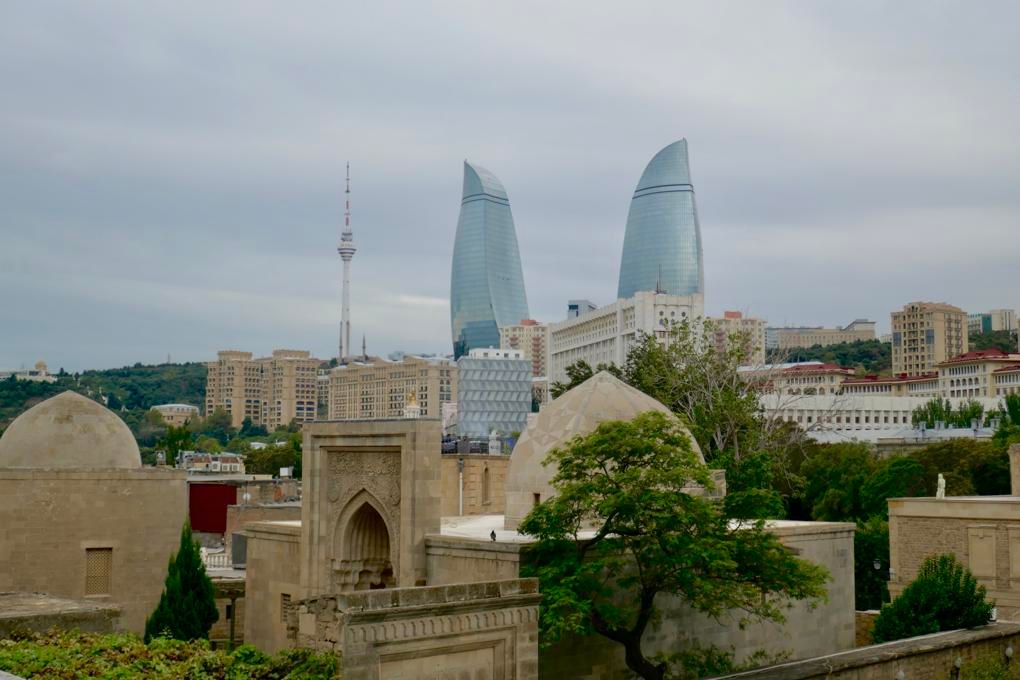
There are 700 volcanoes in the world - half of them in Azerbaijan - I’d arrived in the Land of Fire. The Persian word Azer means fire, referring to extensive petroleum deposits, known since ancient times, and as a former centre of the Zoroastrian faith (who worshipped fire).
Located in the southern Caucasus mountains, Azerbaijan borders the Caspian Sea, Georgia, Russia, Iran and Armenia. The Nagorno-Karabakh region (shown on the map below in light pink) is disputed by Armenia, but internationally recognized as territory of Azerbaijan.
Azerbaijan’s capital, Baku, situated on the Absheron Peninsula has the biggest and best harbor on the Caspian Sea. This Sea is the world's largest inland body of water - with no outlet and hence has a higher salt content. Did you know the sea and city are 28 metres below sea level making Baku lower than Amsterdam which is a mere 2 metres below sea level?
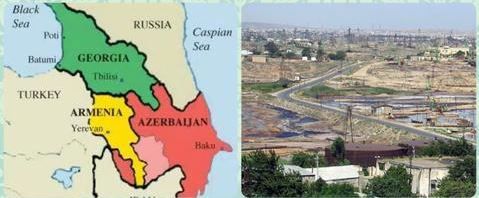
Mud volcanoes form from pockets of underground gas rising to the surface - the mud is actually cold as it’s not made from magma.
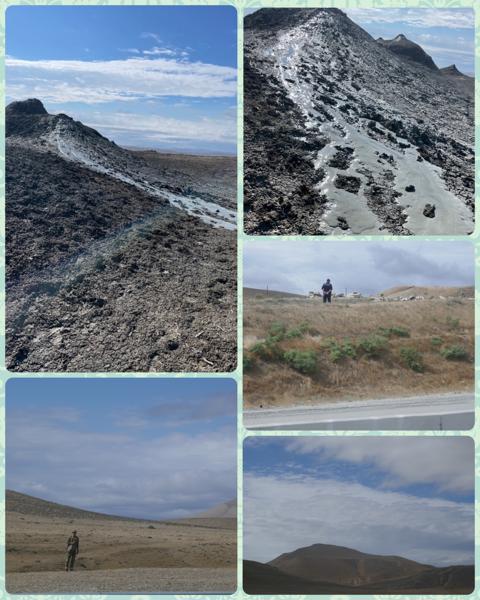
We saw natural gas seeping from the ground and spontaneously combusting at Yanar Dag while mud oozed from volcanoes in areas not far from Baku. Locals say streams nearby Yanar Dag can be ignited with a match! Smokers beware!
These flares were common throughout the Absheron Peninsula and Marco Polo wrote about them in the 13th century. The Ateshgah Fire Temple, an ancient site of Zoroastrian worship was built over an area with natural gas flames. For centuries Zoroastrianism was the dominant religion of Azerbaijan and practised extensively even as far back as the 1st century BCE.
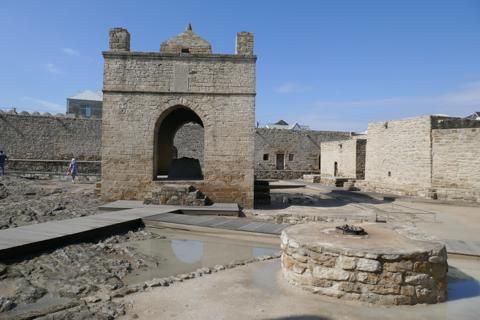
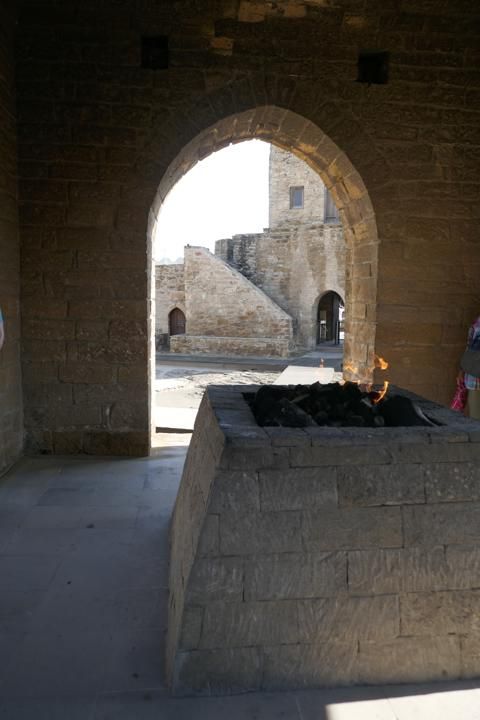
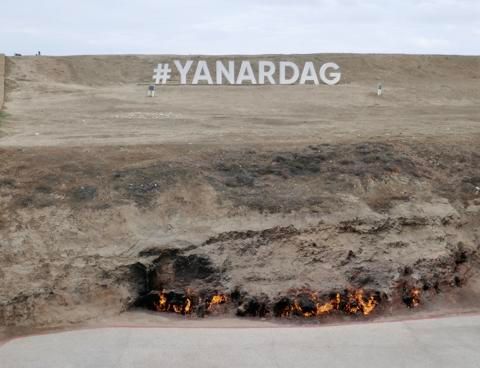
Azerbaijan combines the heritage of two civilisations - the Seljuk Turks of the 11th century and the ancient Persians. Little is known of Azerbaijan's history until its conversion to Islam by the Arabs in 642CE. Today 95% remain Muslims: 85% Shia, 15% Sunni; Azerbaijan has the 2nd highest percentage of Shia Muslims in the world, after Iran.
After centuries of prosperity, Azerbaijan was ravaged by Mongol invasions, regaining prosperity in the 13th-15th centuries under the Mongol II-Khans, the native Shirvan Shahs, and under Persia's Safavid Dynasty.
Due to its location on the shore of the Caspian Sea, connecting Europe to Central Asia and the Near East, Azerbaijan was fought over by Russia, Persia, and the Ottomans for several centuries. Finally, the Russians split Azerbaijan's territory with Persia in 1828, establishing the present borders and squashing local Azerbaijani khans.
The extensive oil fields discovered in the 1870s led to prosperity in the years before WWI - producing more than half the world's supply of oil. Azerbaijan is the oldest known oil-producing region in the world with development due to the widespread use of kerosene lamps and the invention of an internal combustion engine.
At the collapse of the Russian Empire in 1917, an independent republic was proclaimed in 1918 when an attempt to establish a Transcaucasian Republic with Armenia and Georgia failed. After a short-lived independence in January 1920, the Red Army invaded Azerbaijan 3 months later and it eventually became part of the USSR in 1936.
Civil unrest in the late 1980s lead to a violent confrontation when Soviet troops killed 190 nationalist demonstrators in Baku in January 1990. At last Azerbaijan declared its independence from the USSR in August, 1991.1
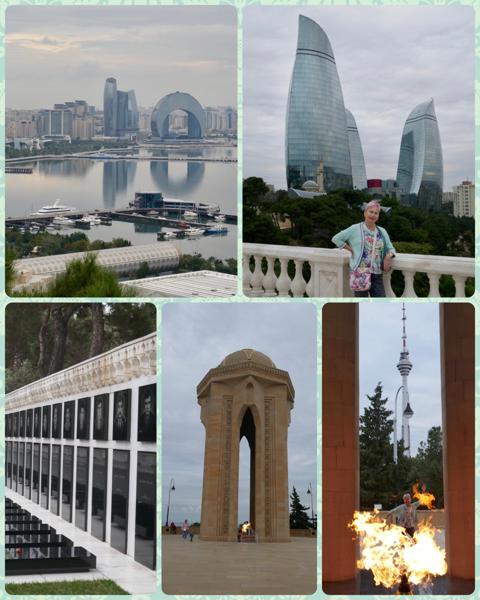
As we walked along the Caspian Sea promenade, the Flame Towers loomed large. These 3 skyscrapers have become a symbol of modern Baku, overlooking the old city centre which we often glimpsed as we toured the city.
One tower the luxurious Fairmont Baku Hotel, another office space and the third, residential apartments. At night the facades come alive with the help of some 10,000 LED lights.
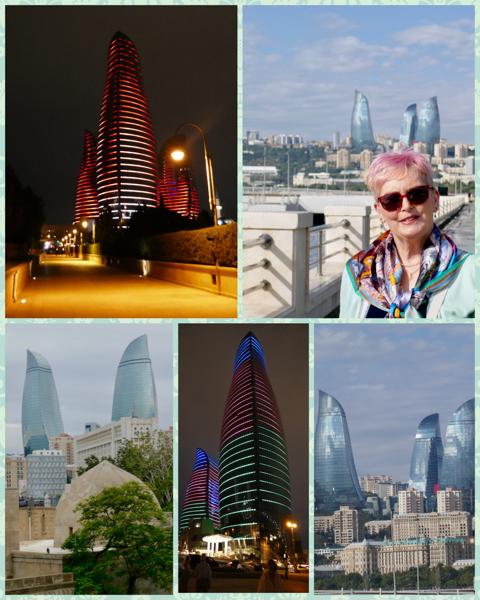
Today the city is a mix of modern sky scrapers, mansions built on the profits of black gold, Russian style apartment buildings, designer stores galore, medieval buildings and oil rigs dotting the skyline.
Often the oil is so close to the surface it oozes from the ground - oil rigs are even located in backyards of private homes - unlike the Beverly Hillbillies^ they can’t touch it - all the oil is owned by the state.
^ The Beverly Hillbillies was an American sitcom during the 1960s where a family discovered oil in their backyard and became instant millionaires.
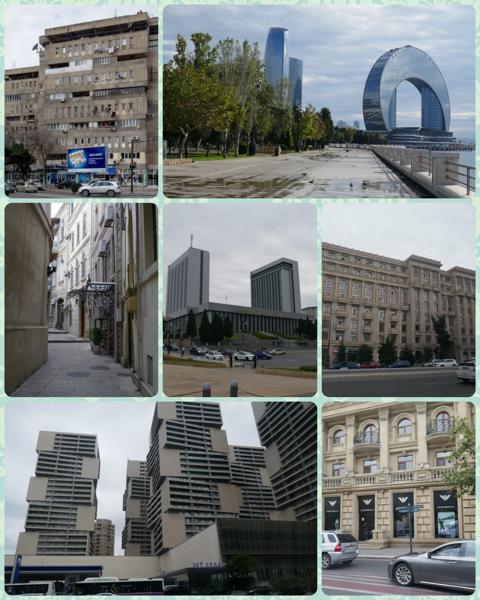
Join me tomorrow to continue exploring Azerbaijan.
Credits:
1 Wikipedia
